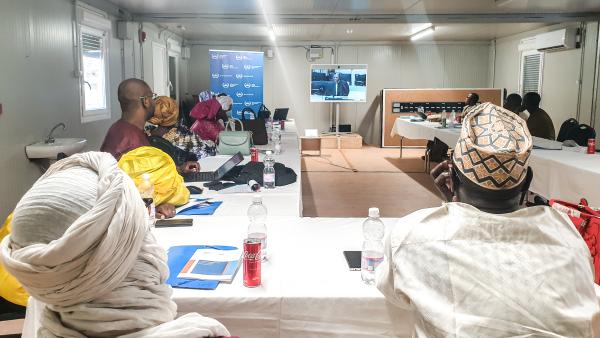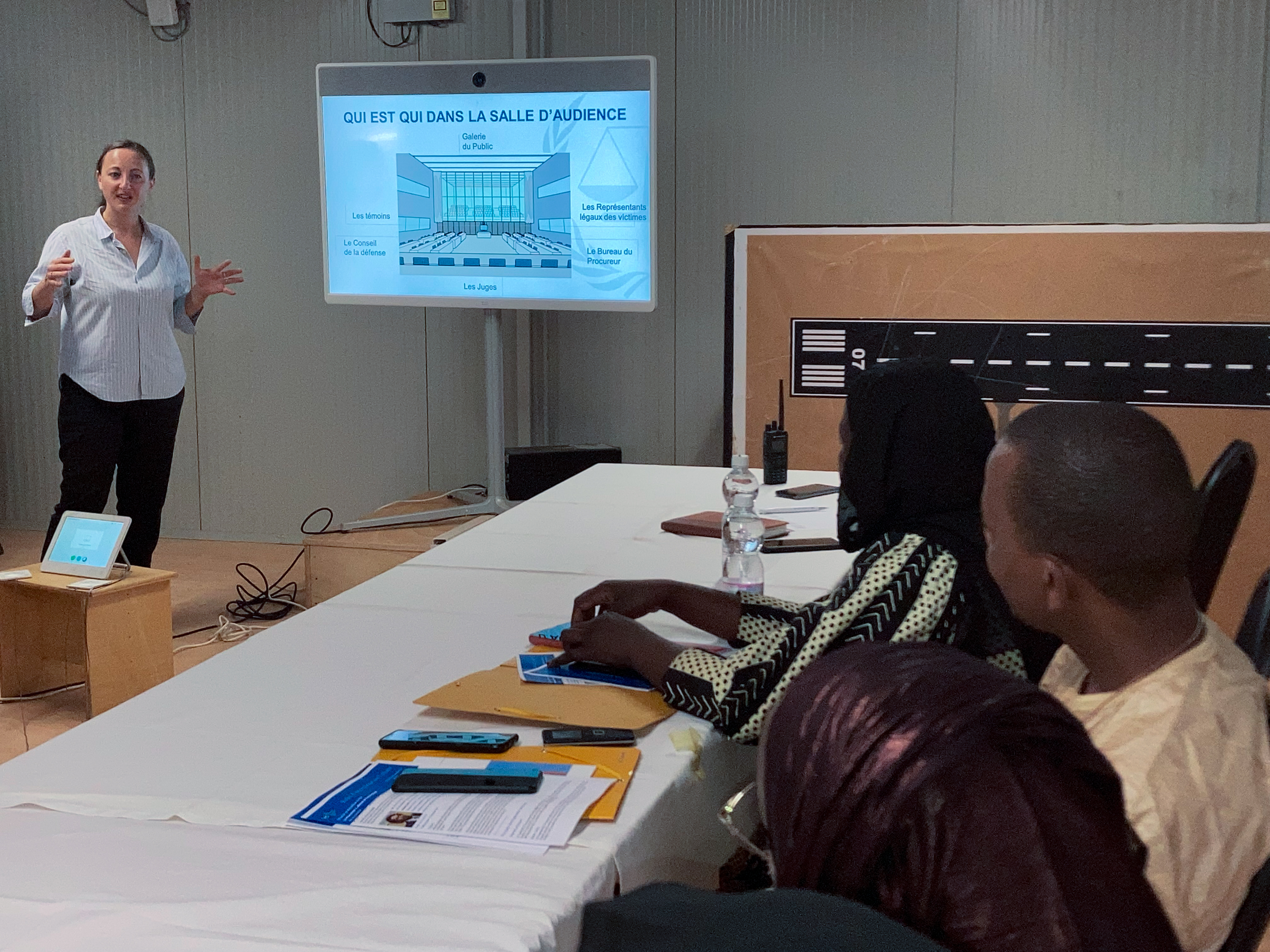
If we don’t have peace …
With Margot Tedesco
I touch down in the middle of the desert with a sense of anticipation and apprehension. Mention Timbuktu, fabled city of Tuareg caravans and epicentre of the salt trade in the fifteenth and sixteenth centuries, and the name never fails to captivate. And yet it is often forgotten that, in 2012, the “Pearl of the desert” was in the grip of the jihadi group Ansar Dine after the Malian army lost control of the city.
We leave Bamako at the crack of dawn. It takes us almost two hours in a small Antonov belonging to MINUSMA, the United Nations peacekeeping mission, to cover the 1000 km between Bamako, Mali’s capital, and Timbuktu. I am disappointed not to see us land, but did not manage to get one of the few window seats.
As we leave the aircraft, white light dazzles us. It is 52 degrees in the sun, 45 in the shade − more scorching even than in Bamako. May, the hottest month in Mali. We long for the more clement season. The Defence in the Al Hassan case started presenting its evidence a week ago and we are due to meet the affected communities to inform them about this milestone in the trial. Mr Al Hassan is facing charges of crimes against humanity and war crimes, allegedly committed in Timbuktu between April 2012 and January 2013. He is alleged to have been an Ansar Dine member, de facto superintendent of the Islamic Police and involved in the work of the Islamic Court.
Mohamed and I make up the new, small team from the outreach unit of the ICC office in Mali. The unit, which was set up several months ago, allows the Court to perform its crucial work of providing information and outreach to the affected communities. Meeting and talking to the communities is probably the part of my work which I enjoy the most and find the most rewarding. Our work on the ground allows communities with limited or no internet access to see justice being delivered.
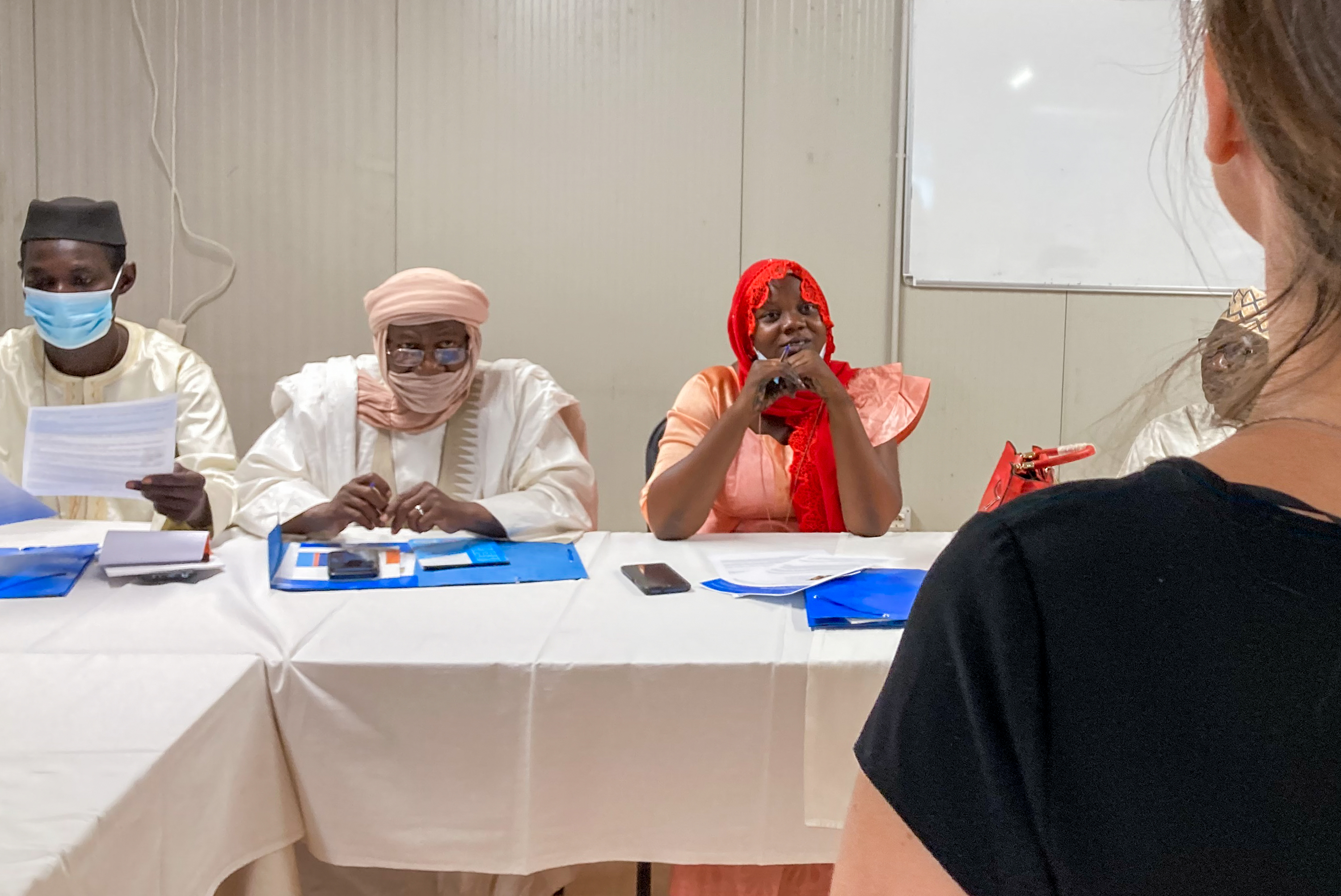
I do not really know what to expect from meeting the communities of Timbuktu. I wonder how they will react. For the first time, they will meet a team to talk to them about the Al Hassan case. We will also screen Al Mahdi’s admission of guilt in which he asks the people of Timbuktu to forgive him for destroying mausoleums and the door of the Sidi Yahia Mosque. In 2016, Mr Al Mahdi pleaded guilty and was given a prison sentence of nine years, later reduced to seven. In the reparations order handed down in August 2017 the Court ordered, as a symbolic measure, that his apology be widely disseminated.
A precarious security situation
I feel confident that the activities will run smoothly. The day before, the local authorities gave us their blessing. The mayor expressed his wish that the 333 Wali (saints) of Timbuktu accompany us in our activities. “We’ll leave a spot for them in the car,” I said. The mayor and my colleagues laughed. For a split second, I feared that my quip might have been taken the wrong way. I glanced at Mohamed, a son of Mali. Not at all, quite the contrary: to my relief it went down well.
The mood is intense. The security situation in the city is volatile. Of this we are reminded during the security briefing and again when we are taken to the containers that will be our sleeping quarters. We are being housed in the MINUSMA “Super Camp”. Sandbags piled over a metre high surround our rooms. The room’s two windows are partly blocked. Through them only a sliver of sky can be glimpsed.
“When you hear the alarm, you’ve got about 30 seconds before the blast. Lie on the ground. Get to the nearest bunker as soon as you can,” the security officer explains. He steps forward a couple of metres: “Here’s the closest bunker to your room. There are others all over the camp. Note where they are”. The bunker is a container beneath a sandbag-tower. Inside, there are benches and fans.
Engaging with communities
First session. Everything goes well with the journalists. We screen some footage of hearings in both cases. Al Mahdi’s admission of guilt is met with ambivalence: some doubt the sincerity of his apology; others say they believe and accept it. The journalists react similarly to the other groups we will meet in the coming days.
End of the second session with civil society. The attendees file out of the room and head outside in small groups. Some came by their own motorbike, others took the few motorbike taxis available in town. Mohamed and I head to the cafeteria, when Mohamed, telephone in hand, suddenly says: “A MINUSMA car was the target of an attack, 200 metres from the camp. One of the attendees has just told me. He saw it all!”
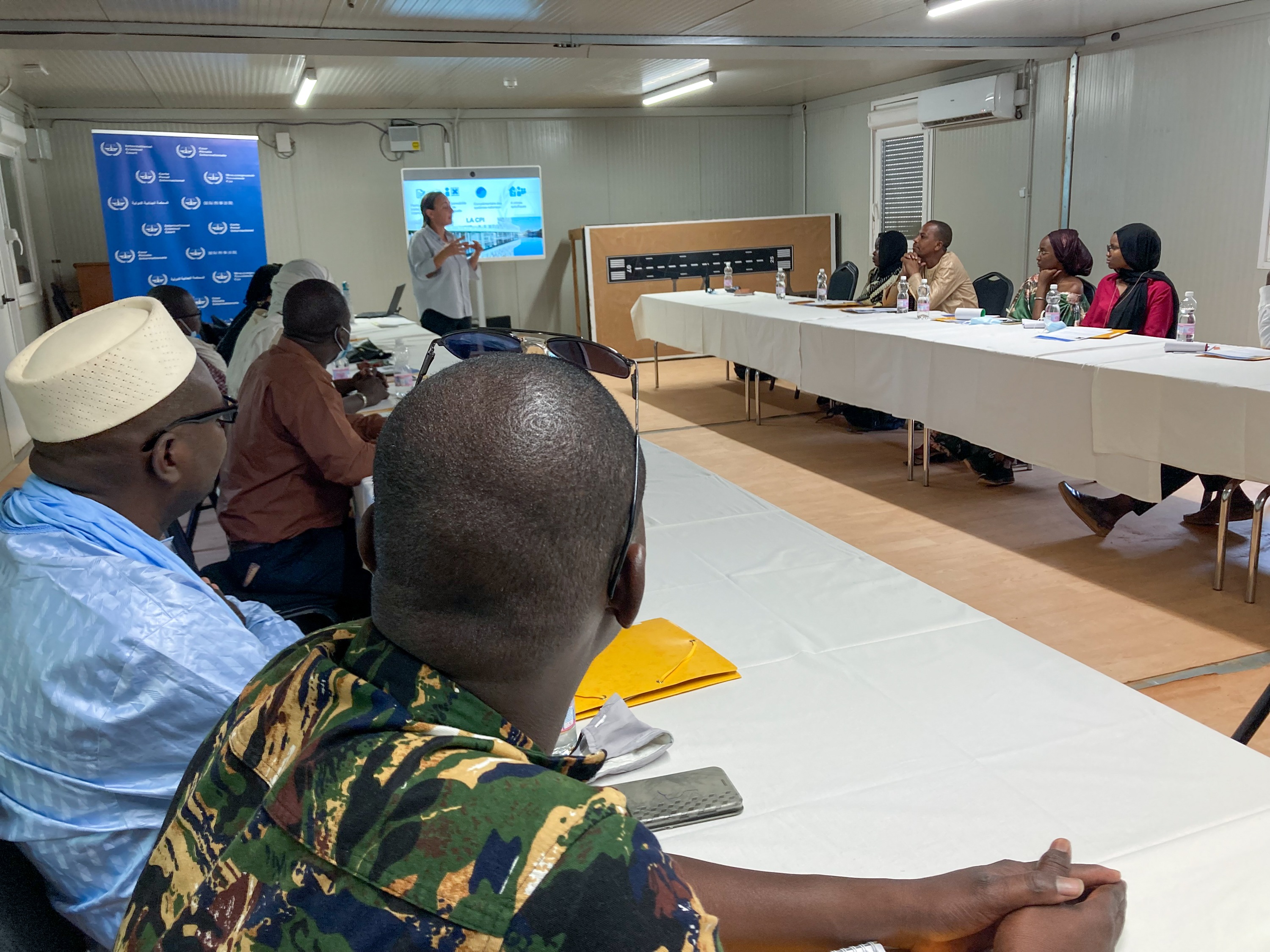
The whereabouts of the other attendees is probably at the forefront of most minds. Our security officer dashes to the big gate of the camp. Some had sheltered in the bunker next to the exit. He takes names. There are 11 of them. I take a roll-call and ask Mohamed to phone any of them who are not in the bunker to ascertain that they are safe. All are unscathed, although one fell from his motorbike when taking cover at the time of the attack.
“Will the participants in the third session travel to meet us tomorrow?” I ask. Mohamed reassures me and rightly so: the next morning, they all materialize despite my fears. We have, however, had to cancel the afternoon’s meetings with local stations.
Fourth and final session, with religious leaders and neighbourhood leaders. Our last day. I wear my long dress and headscarf for the occasion. We have decided that Mohamed will lead the session in Songhay, the local language. Most show an interest in our information. At the end of the discussion, those who perhaps did not dare take the floor come up to us to mention their involvement in the process of arriving at reparations measures in the Al Mahdi case.
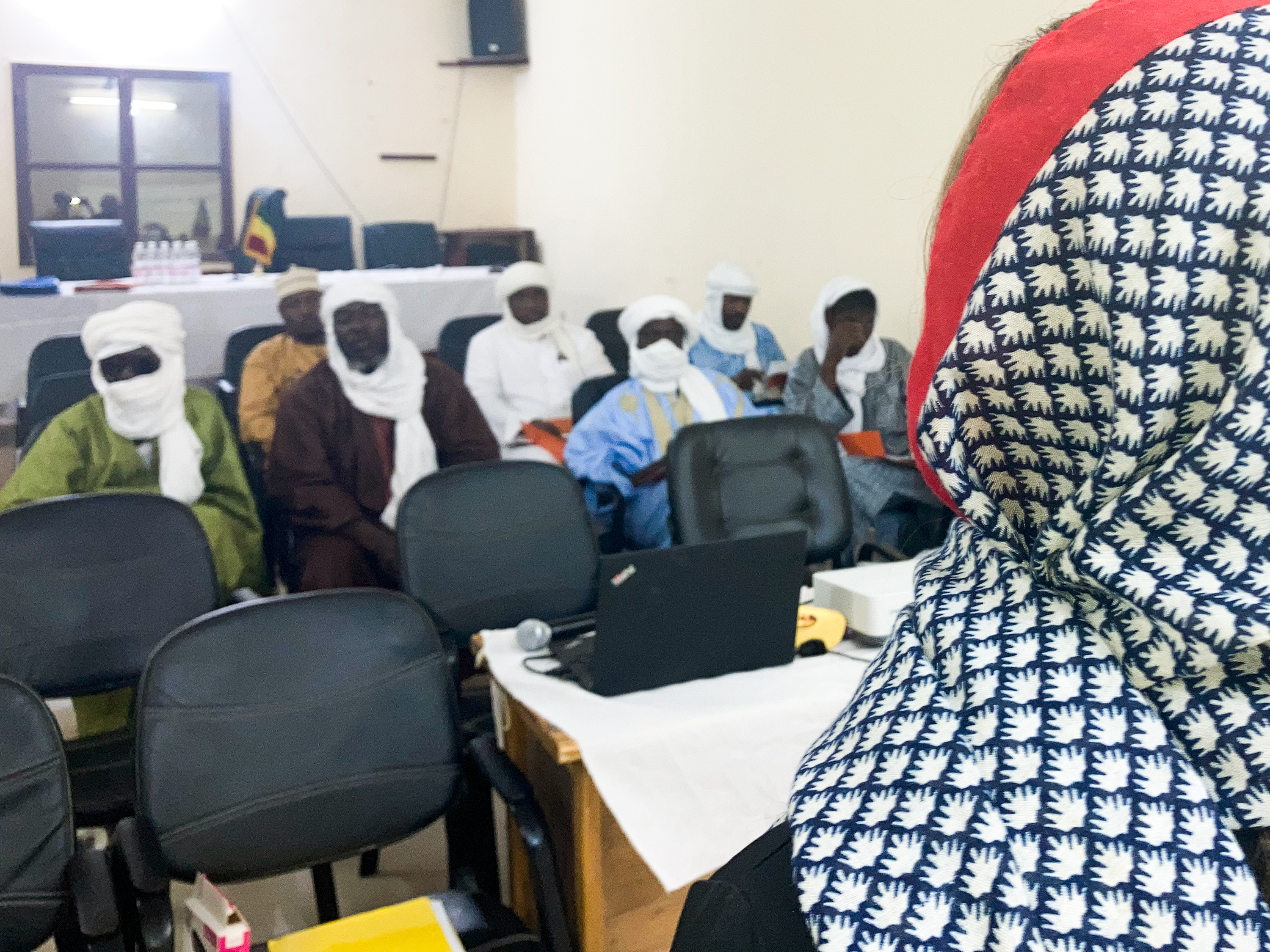
Uncovering out global heritage
It is raining!
Raindrops splatter the ground. A good omen. “You’ve brought us rain at a time of blazing heat,” says one local man.
Our team, accompanied by security and blue helmets, proceeds to the Ahmed Baba Centre. I film the marks left by the rain on the cement at the Centre while we wait for the UNESCO consultant who trains archivists to conserve manuscripts. I met her a few days ago in the camp. It is through her that we were able to arrange the visit.
The visits starts. It is our privilege to have the Director of the Centre as our guide. We meet students being trained in conservation techniques. They are making archival boxes to protect manuscripts that are hundreds of years old.
I am still holding the camera. Mohamed and I have been filming everything we can since we arrived in Timbuktu, in order to document our mission.
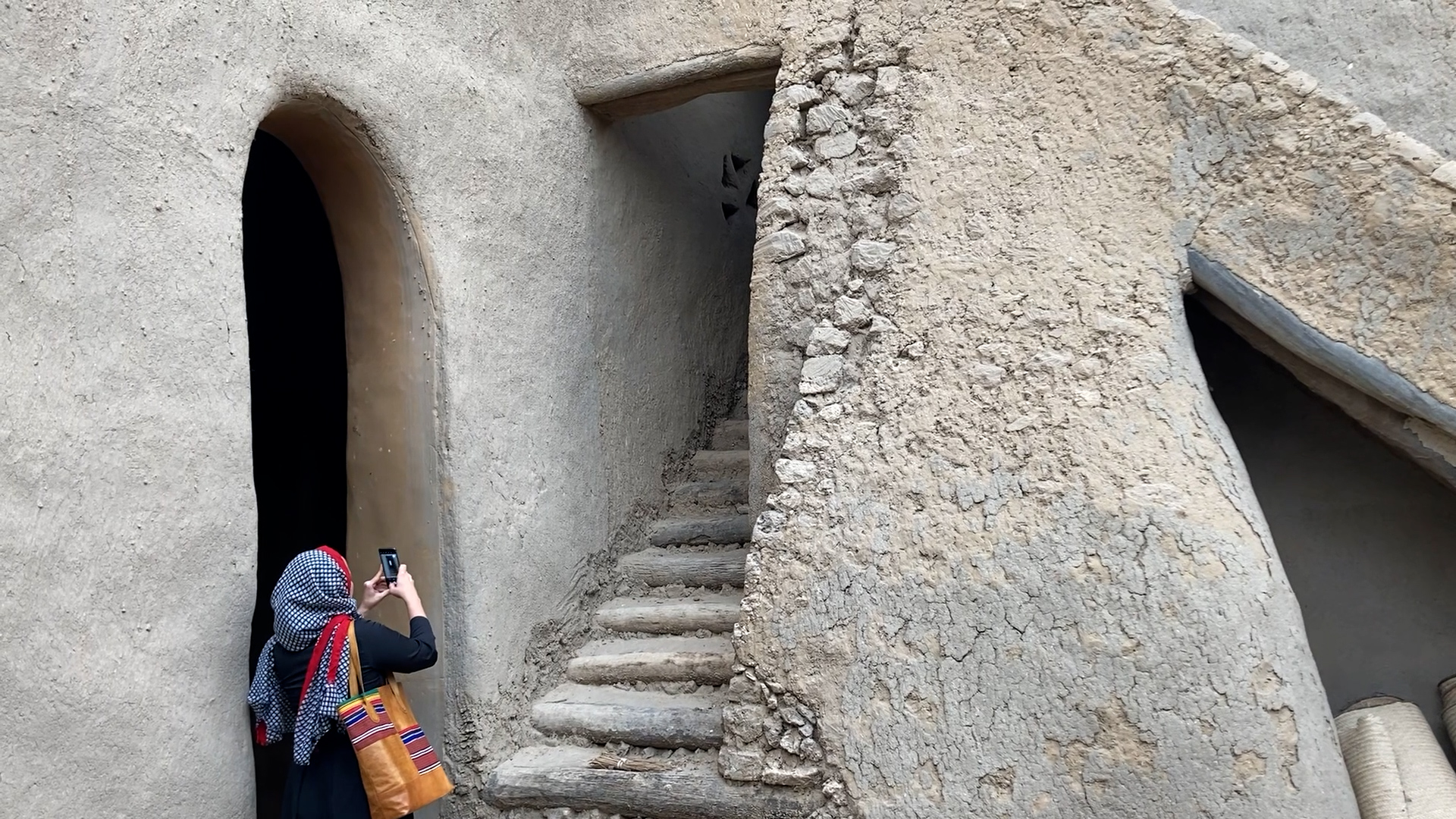
We descend into the Centre’s basement, to the repository. A large grill door reveals a gallery where some manuscripts are on display. We step inside. The sound from the other rooms is now completely muffled. Another blast-proof door is opened. The room is filled with iron shelving and red, blue, black and green boxes of every size. Each box contains a single manuscript. Around 100,000 manuscripts in Arabic dating back to the thirteen century are preserved here. The room feels cool. The Director opens a box for us. At the sight of this manuscript which has survived the centuries, wars, rodents and other parasites, I am in awe. A fragment of the history of our humanity lies there, before my eyes, delicate in its box.
Our visit is timed down to the minute. We head for the cemetery where three of Timbuktu’s twenty-two mausoleums stand. Those we will visit were destroyed during the occupation and have since been rebuilt. As they were protected historic and religious buildings, their destruction was found to be a war crime when the Court prosecuted the offence for the first time.
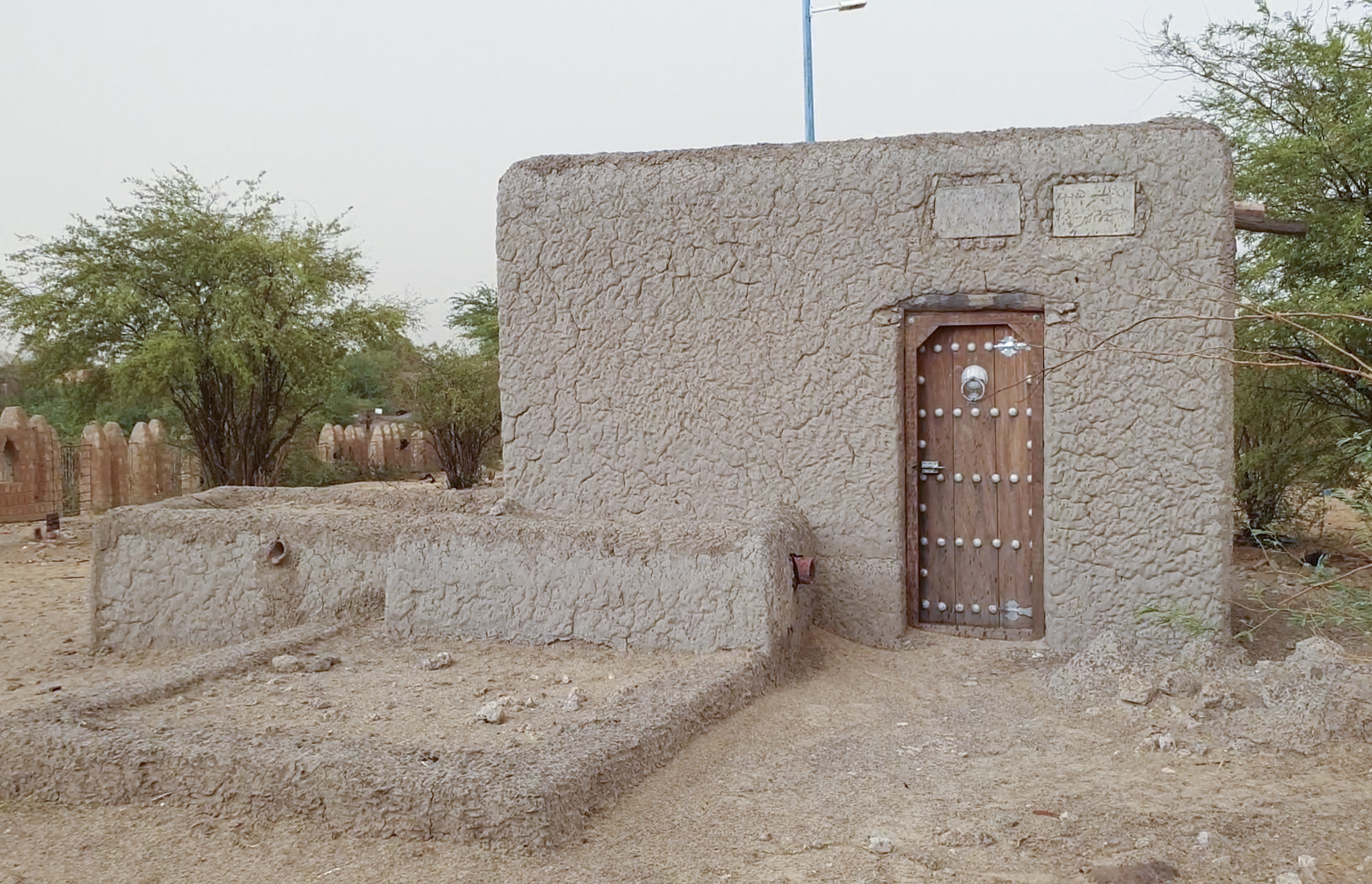
We cross the cemetery, skirting graves and earthenware pots. The mausoleums are at the back. I feel uneasy. We are fairly exposed, out in the middle of the graveyard. Armed blue helmets surround us. The mausoleums, made of raw earth and adorned with intricately decorated doors, house the tombs of prominent figures revered as the Wali of Timbuktu.
The visit is swift. Not easy to take a moment’s reflection despite being a place of contemplation. We are urged to leave for the final site of our visit, the Great Mosque of Djingareyber.
We follow the imam’s son on foot through the back streets of downtown Timbuktu. The details of the doors to the houses, embellished with wood carvings and metalwork, are stunning.
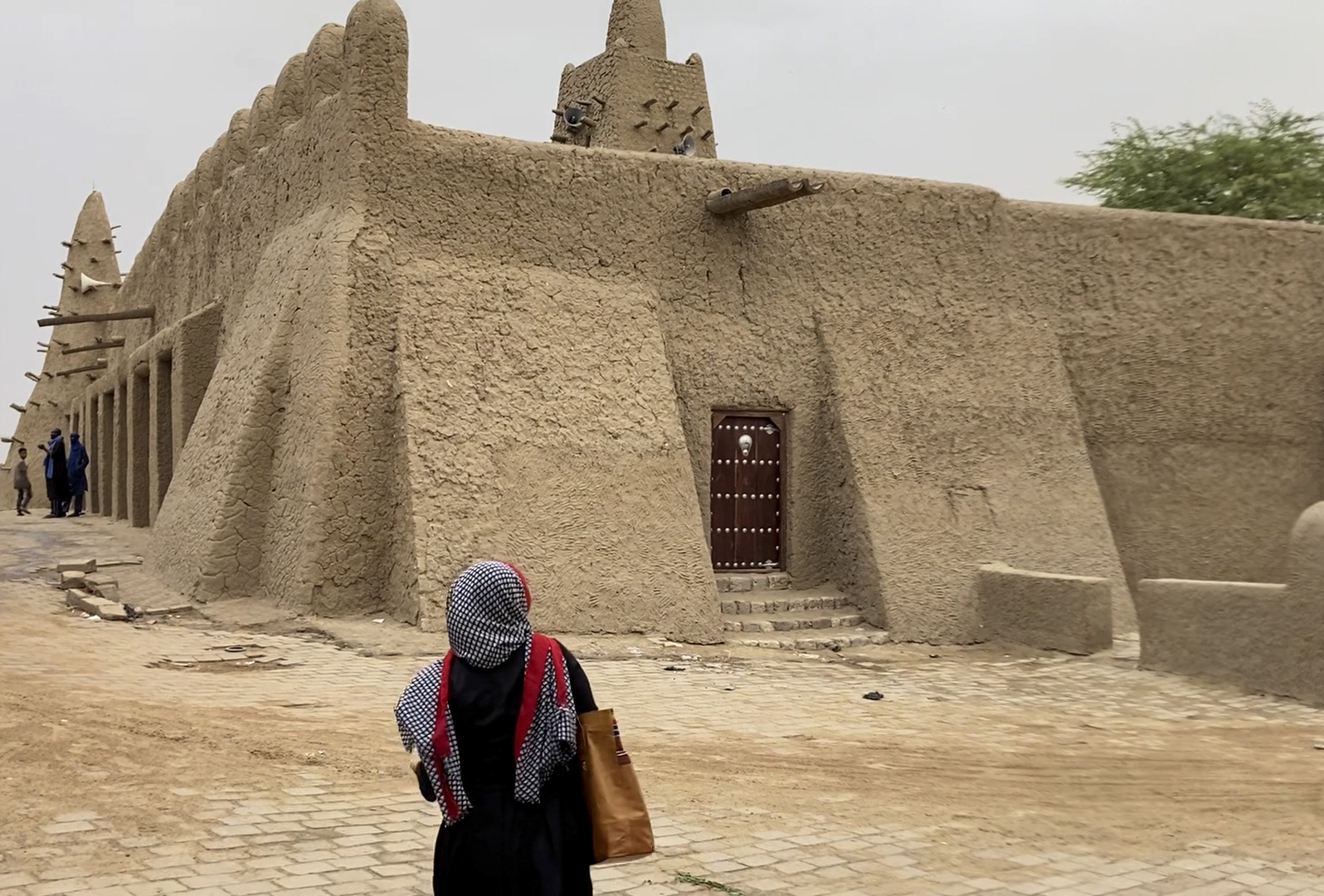
We enter the mosque built from banco, a material consisting of baked earth, in the fourteenth century. We come across long, dark passageways and doors delicately studded with copper and bronze. We do not linger. The clock is ticking. We have to be back at camp by nightfall, 5 p.m.
After visiting the old quarters of Timbuktu, I forget the difficulties of the morning and the tense security situation that marked our week. I am moved and enthralled by everything I have seen. I feel very fortunate to have seen Timbuktu with my own eyes. Before 2012, the city lived mainly from pilgrimages and tourism. Nowadays, the insecurity in the region makes it unthinkable for any tourist to travel there. I wonder when the population will be able to experience peace again and resume its way of life.
It is then that the words of an archivist in training at the Ahmed Baba Centre come to mind: “We might have our heart’s desire, but if we don’t have peace, we will never see the fruits of our labour”.
